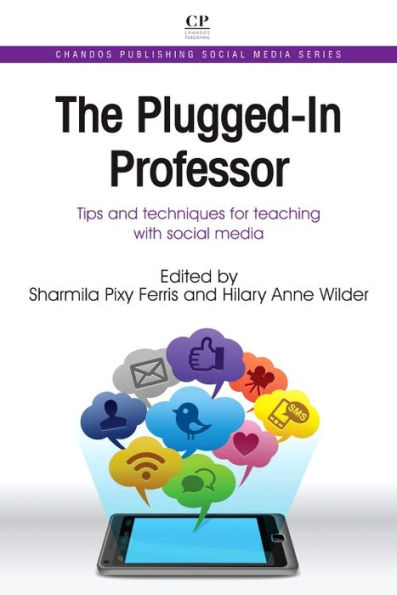The Plugged-In Professor: Tips and Techniques for Teaching with Social Media
New technologies are transforming the way students work. The Plugged in Professor provides a timely and exceptional resource for using social media and other new technologies to help college students meet both general and discipline-specific objectives. The title covers techniques built around well-known social networking technologies, as well as other emerging technologies such as mobile phone and tablet apps. With a practical focus and reader-friendly format, this book shows educators how to apply techniques in each technology, and includes clear student learning objectives, step-by-step directions, observations and advice, and supplemental readings and resources. Twenty-five chapters by leading contributors cover key aspects of new technologies in education, in four parts: Writing, research and information fluency; Communication and collaboration; Critical thinking and creativity; and Integrative learning. - Provides a cutting-edge resource for academics and practitioners in effective ways of reaching today's students through the use of their favourite tool, social media - Outlines a range of strategies taking advantage of the unique learning styles and habits of net generation learners - Exposes students to ways in which these technologies can be used in their professional and personal lives
1112801670
The Plugged-In Professor: Tips and Techniques for Teaching with Social Media
New technologies are transforming the way students work. The Plugged in Professor provides a timely and exceptional resource for using social media and other new technologies to help college students meet both general and discipline-specific objectives. The title covers techniques built around well-known social networking technologies, as well as other emerging technologies such as mobile phone and tablet apps. With a practical focus and reader-friendly format, this book shows educators how to apply techniques in each technology, and includes clear student learning objectives, step-by-step directions, observations and advice, and supplemental readings and resources. Twenty-five chapters by leading contributors cover key aspects of new technologies in education, in four parts: Writing, research and information fluency; Communication and collaboration; Critical thinking and creativity; and Integrative learning. - Provides a cutting-edge resource for academics and practitioners in effective ways of reaching today's students through the use of their favourite tool, social media - Outlines a range of strategies taking advantage of the unique learning styles and habits of net generation learners - Exposes students to ways in which these technologies can be used in their professional and personal lives
90.0
In Stock
5
1

The Plugged-In Professor: Tips and Techniques for Teaching with Social Media
376
The Plugged-In Professor: Tips and Techniques for Teaching with Social Media
376
90.0
In Stock

Product Details
| ISBN-13: | 9781780633428 |
|---|---|
| Publisher: | Chandos Publishing |
| Publication date: | 05/15/2013 |
| Series: | Chandos Publishing Social Media Series |
| Sold by: | Barnes & Noble |
| Format: | eBook |
| Pages: | 376 |
| File size: | 5 MB |
About the Author
From the B&N Reads Blog
